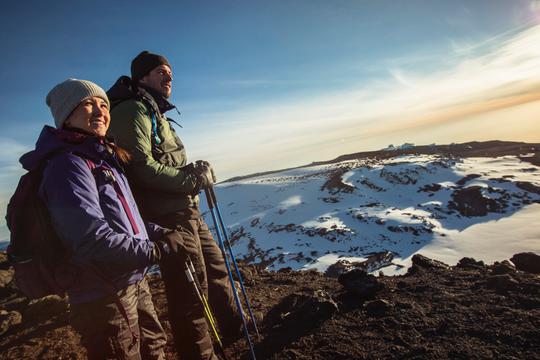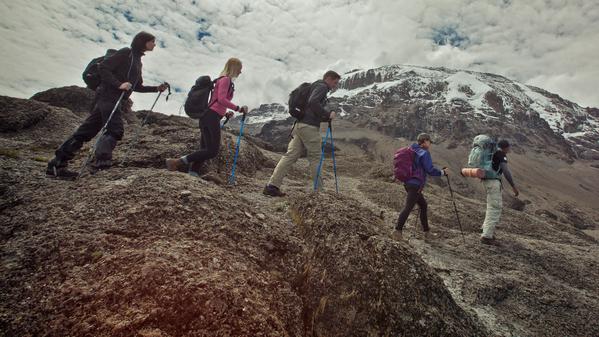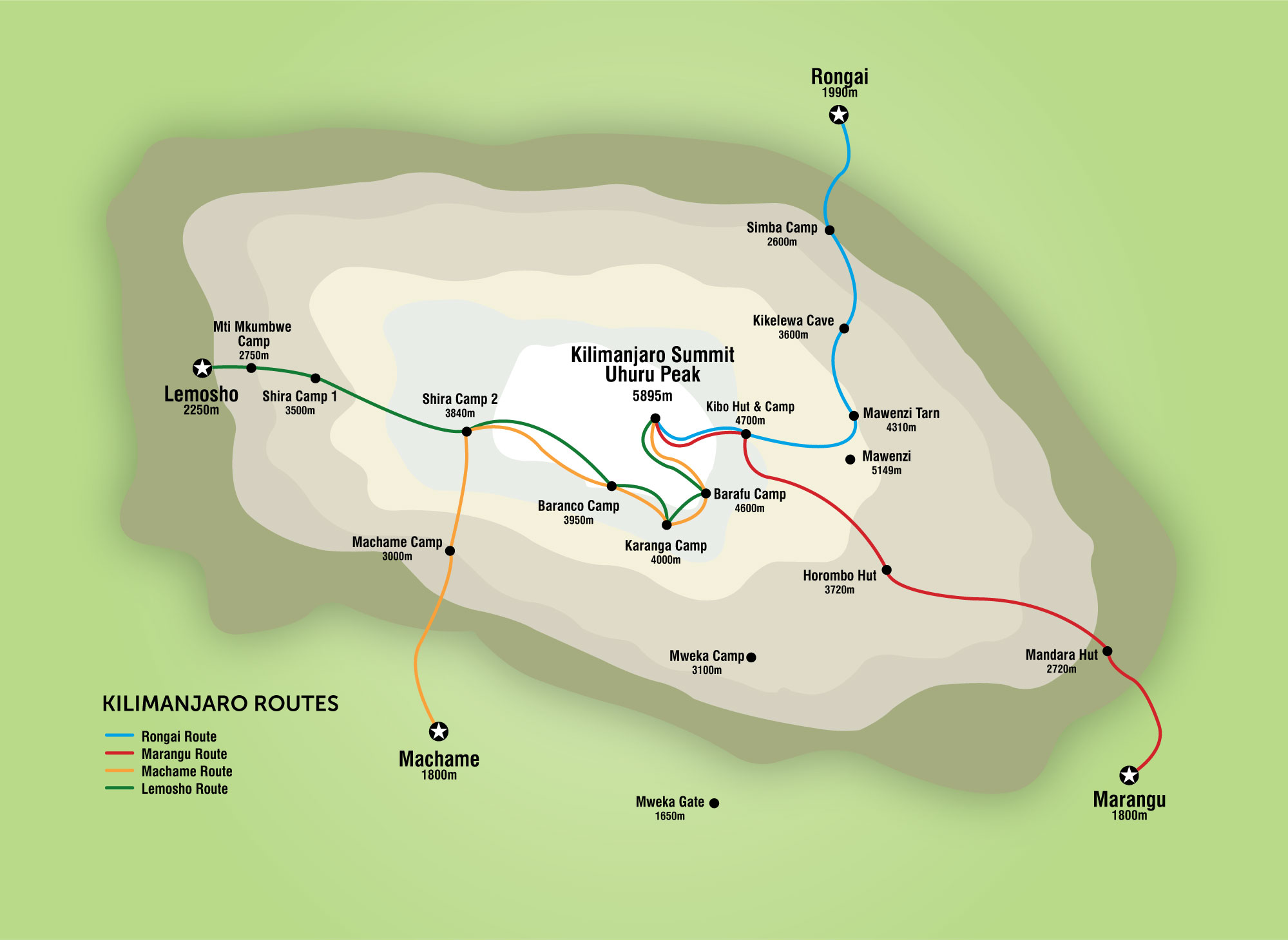
Virtually climb Mt Kilimanjaro with us
Just because we aren’t travelling as much as we’d like to right now, doesn’t mean we can’t experience our big, beautiful world. Join one of our guides for a virtual tour of Mt Kilimanjaro!

Ever stood on the top floor of a skyscraper and thought, “Bah, this ain’t so tall”? Then you might just be Kilimanjaro material. Join us as we walk in the bootprints of famed explorers and mountaineers on our way to the top of Africa’s tallest peak, hiking through lush rainforests and alpine deserts, across glaciers by day and sleeping closer to the stars than you ever dreamed possible by night. Over 1,500 trekkers make the ascent with us each year, and we’d love to help you to the top.
Kilimanjaro is no picnic, but unlike other massive peaks, it gives those daring enough to climb it multiple routes to the top. Consult our route map to see which one’s right for you.

The air at the summit contains about half of the breathable oxygen most of us are used to at sea level. Everyone will handle the high altitude and thinner air differently and to varying degrees, which is why we try to keep the ascent slow and steady. The more time you give yourself to acclimatize, the easier your attempt at the summit will be.
You’ll need energy to make that push to the top, and our camp cooks make certain that there’s plenty of healthy, quality food on hand. Our team of porters carries the equipment and supplies (including fresh produce), and meals consist of local and international cuisine. Our cooks can accommodate special requests, but please let us know when you book.
As the highest peak in Africa (and the tallest freestanding mountain in the entire world), Kili is home to a variety of ecosystems and microclimataes. Everything from tropical forests to subzero alpine environments await up here, and the weather can switch from pleasant to inclement at a moment’s notice, so come prepared for anything.
On all routes excluding the Marangu Route, we offer full-service camping. Apart from a sleeping bag and pillow (which can be rented), you don’t need to bring anything else. Your three-season tent, complete with built-in vestibule and mesh insect netting, will be pitched for you, and we’ll provide you with a 4cm-thick (1.6 in) mattress free of charge.
On the Marangu Route, you’ll stay in wooden A-frame huts with single beds and simple mattresses. Space on the mountain is limited, so prepare for the possibility of sharing your hut with non-G Adventures trekkers and/or members of the opposite sex. All huts are equipped with shared toilets and washing facilities.
While Kili is no cakewalk, it’s a perfectly achievable hike for healthy travellers with a moderate degree of physical fitness. That said, we do recommend that you do some advance training. The best way to prepare is to hike and hill-walk wherever you can in the weeks leading up to your departure in order to build up your stamina and climbing muscles. (A stair-climber at the gym is a good alternative if you don’t have any mountains at the ready.) Start training six months out. With a little preparation, you should get to the top without much trouble.
Kilimanjaro is a beast of a mountain, but our skilled staff and dedicated support crews are always ready to help you get the best of it. And while we know Kili’s every rock, pebble, and grain of sand, the bonuses of climbing with us don’t end there.